Garden urns have long been a staple in outdoor décor, adding a touch of elegance, history, and personality to any garden. Whether you have a sprawling estate or a modest backyard, the right urn can transform your space, serving as a focal point or a complementary piece. However, with so many options available, choosing the right garden urn can feel overwhelming. From material and style to size and placement, there are several factors to consider before making your purchase.
This guide will walk you through everything you need to know to make an informed decision when investing in a garden urn.
Understanding the Role of Garden Urns in Your Space
Before you dive into the specifics of purchasing a garden urn, it’s crucial to understand its role in your garden design. Garden urns can serve multiple purposes:
- Focal Points: A well-placed urn can draw the eye to a particular part of your garden, acting as a centerpiece.
- Frame Pathways or Entrances: Use a pair of matching urns to create symmetry and guide visitors through pathways or archways.
- Plant Containers: Many urns double as planters, providing a decorative vessel for flowers, shrubs, or even small trees.
- Sculptural Elements: With or without plants, urns can add architectural interest and a sense of history or artfulness.
Material Matters: Choosing the Right Composition
Garden urns come in a variety of materials, each with its own benefits and drawbacks. Your choice will largely depend on your aesthetic preferences, budget, and the climate in which you live.
a. Concrete and Stone
- Pros: Durable, timeless, and capable of withstanding extreme weather conditions. Stone and concrete urns age beautifully, developing a patina over time.
- Cons: Heavy and difficult to move. They can be more expensive and require a sturdy base for placement.
b. Metal (Cast Iron, Aluminum, or Zinc)
- Pros: Sturdy and elegant, metal urns often feature intricate designs. Cast iron is particularly known for its vintage appeal.
- Cons: Susceptible to rust, especially in humid or rainy climates, unless treated or powder-coated. They can also be quite heavy.
c. Terracotta and Ceramic
- Pros: Classic and versatile, these materials offer a wide range of colors and textures. They’re ideal for Mediterranean or rustic-style gardens.
- Cons: Fragile and prone to cracking in freezing temperatures. Not as durable as stone or metal.
d. Fiberglass and Resin
- Pros: Lightweight, affordable, and available in various finishes that mimic other materials like stone or metal. They are also weather-resistant and easy to move.
- Cons: Less durable and may fade or crack over time, especially with prolonged exposure to sunlight.
Style and Design Considerations
The style of your garden urn should complement your overall garden design. Here are some popular styles to consider:
- Classical: Inspired by ancient Greek and Roman designs, classical urns often feature intricate carvings, fluted edges, or pedestal bases. Ideal for formal gardens.
- Modern: Clean lines, minimalist shapes, and sleek finishes characterize modern urns. These work well in contemporary garden settings.
- Rustic or Cottage: Featuring aged finishes, natural textures, and organic shapes, these urns blend seamlessly into informal, country-style gardens.
- Ornate and Decorative: Urns with elaborate patterns, reliefs, or figurative elements add an artistic touch to your space.
Size and Scale: Finding the Perfect Fit
Size is one of the most important factors when selecting a garden urn. The urn should be proportional to the space it occupies and the plants it holds.
- Large Urns: Ideal for spacious gardens, patios, or as standalone statement pieces. They can also house larger plants like small trees or dense shrubs.
- Medium Urns: Suitable for framing pathways, entrances, or as complementary pieces in mixed arrangements.
- Small Urns: Perfect for tabletops, small garden beds, or as accents on walls and pedestals.
Placement and Positioning
Where you place your garden urn will influence its impact. Here are some tips for strategic placement:
- Entrances and Pathways: Use urns to frame entryways or line garden paths for a welcoming and structured look.
- Centerpieces: Position a large urn in the center of a garden bed, lawn, or courtyard to create a striking focal point.
- Terraces and Patios: Smaller urns work well in these areas, adding a touch of greenery and style to outdoor seating spaces.
- Layering and Grouping: Combine urns of varying heights and styles to add depth and interest to your garden.
Functionality: To Plant or Not to Plant?
Not all garden urns are designed to be planters. Some are purely decorative, while others come with built-in drainage for plants.
- Planter Urns: Look for models with drainage holes if you plan to use the urn as a container for living plants. Ensure the material is suitable for the plant type and weather conditions.
- Decorative Urns: If you’re using the urn as a sculptural element, you can fill it with artificial arrangements, pebbles, or leave it empty.
Weather Resistance and Maintenance
Consider the climate in your area when choosing a garden urn. Some materials, like terracotta, may not fare well in frost, while metals may rust in high humidity. Here are some maintenance tips:
- Stone and Concrete: Require minimal upkeep. Simply clean with water and a mild detergent if moss or dirt accumulates.
- Metal: Regularly inspect for rust and treat as necessary. Use a protective coating to prolong their lifespan.
- Terracotta and Ceramic: Bring these urns indoors during the winter to prevent cracking. Clean with gentle soap and water.
- Fiberglass and Resin: Wipe down with a damp cloth and avoid harsh chemicals that could degrade the material.
Budget Considerations
Garden urns come in a wide price range, from budget-friendly options to high-end designer pieces. Here’s how to manage your budget:
- Set a Spending Limit: Determine how much you’re willing to invest and look for options within that range.
- Compare Materials: Resin and fiberglass are typically more affordable than stone or cast iron.
- Look for Sales and Second-Hand Finds: Antique shops, garden centers, and online marketplaces often have deals on unique urns.
Sustainability and Ethical Sourcing
If sustainability is a priority, look for urns made from recycled or eco-friendly materials. Many modern brands are committed to ethical sourcing and environmental responsibility, so be sure to inquire about the origins of the products.
Conclusion
Investing in a garden urn can significantly enhance the beauty and character of your outdoor space. By considering factors like material, style, size, and placement, you can find an urn that perfectly suits your garden’s aesthetic and functional needs. Whether you’re aiming for a classic, modern, or rustic look, the right urn will serve as a timeless addition to your garden.
Take your time, explore different options, and don’t be afraid to mix and match styles to create a unique and personalized outdoor retreat. Happy gardening!
Frequently Asked Questions
What are the key materials used for water feature urns, and how do they differ?
Water feature urns are commonly made from stone, concrete, metal, fiberglass, and resin. Stone and concrete are durable and develop a natural patina, while metal adds an elegant touch but may require rust protection. Fiberglass and resin are lightweight and weather-resistant, ideal for easy installation.
How do I choose the right size of water feature urn for my garden?
The size depends on your garden’s scale and the intended role of the urn. Large urns work well as focal points in spacious gardens, while medium and small urns are suitable for patios, pathways, or grouped displays.
What should I consider when installing a water feature urn?
Ensure the urn is placed on a stable, level surface, such as a concrete or stone base. For water features, access to electricity for the pump and proper drainage are crucial. Position the urn in a location where it can be easily maintained and enjoyed.
Are water feature urns suitable for all climates?
Yes, but material choice matters. Stone and concrete fare well in various climates but may need sealing in colder regions. Metal may require rust protection in humid environments, and terracotta should be protected from freezing temperatures to avoid cracking.
How do I maintain a water feature urn?
Regularly clean the urn to prevent algae buildup and debris in the water. Check and maintain the pump to ensure proper functionality. Depending on the material, apply protective treatments like sealants or rust inhibitors as needed.
Can I use a water feature urn for planting as well?
Some water feature urns are designed with multifunctionality, allowing you to plant in them. Ensure they have proper drainage and space for plant roots. Alternatively, decorative urns can hold artificial plants or seasonal decorations.
Related Articles
Water Feature Urns: Historical Significance and Modern Interpretations
The Top 5 Benefits of Adding a Garden Urn to Your Garden
Garden Urns 101: Selecting, Installing, and Maintaining Your Perfect Piece
How to Remove White Scale from Your Water Feature
Preventing Algae in Water Fountains: A Complete Guide
Winterizing Outdoor Water Fountains: A Complete Guide
Water Fountains for Noise Reduction
Frequently Asked Questions About Water Features


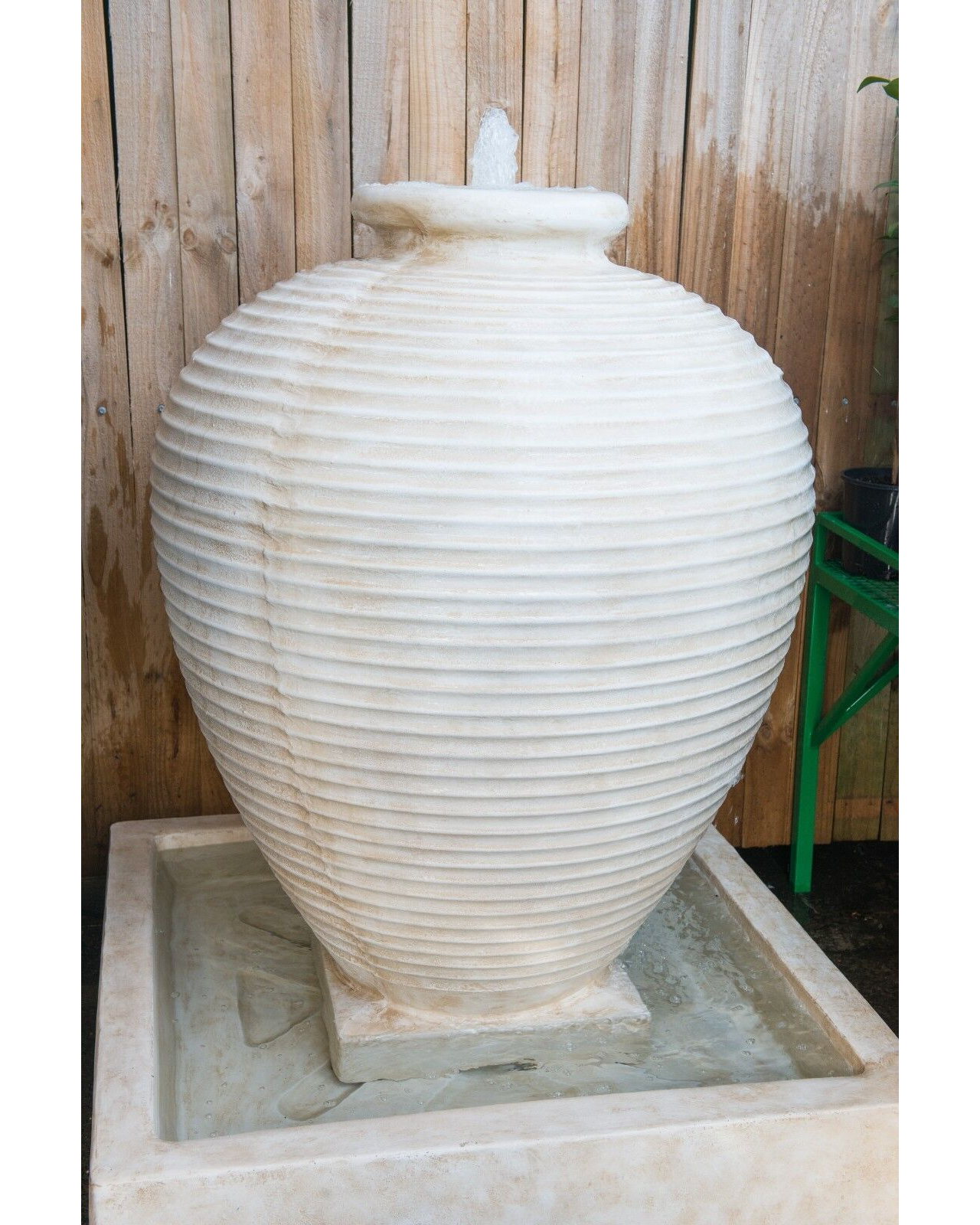

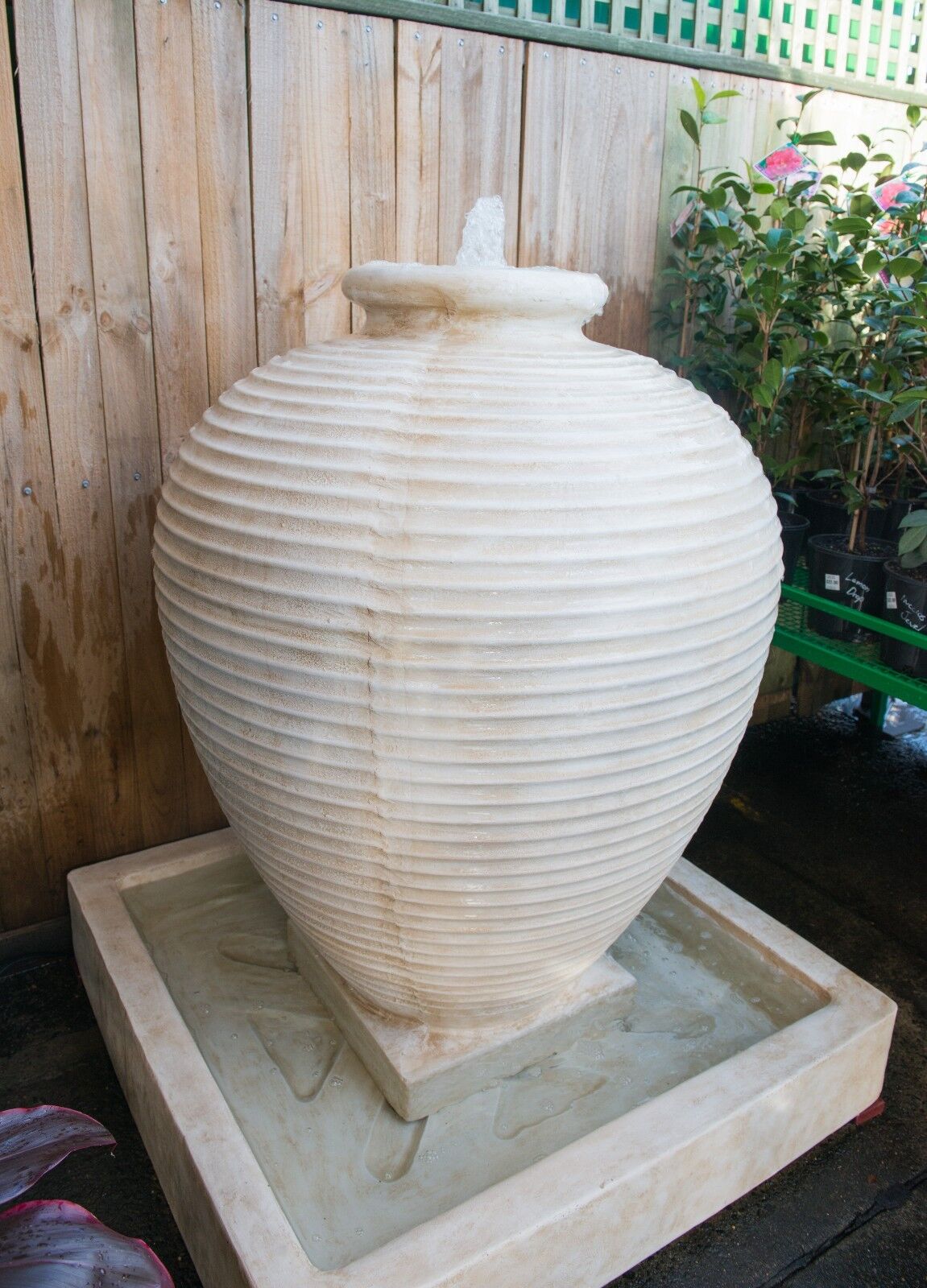
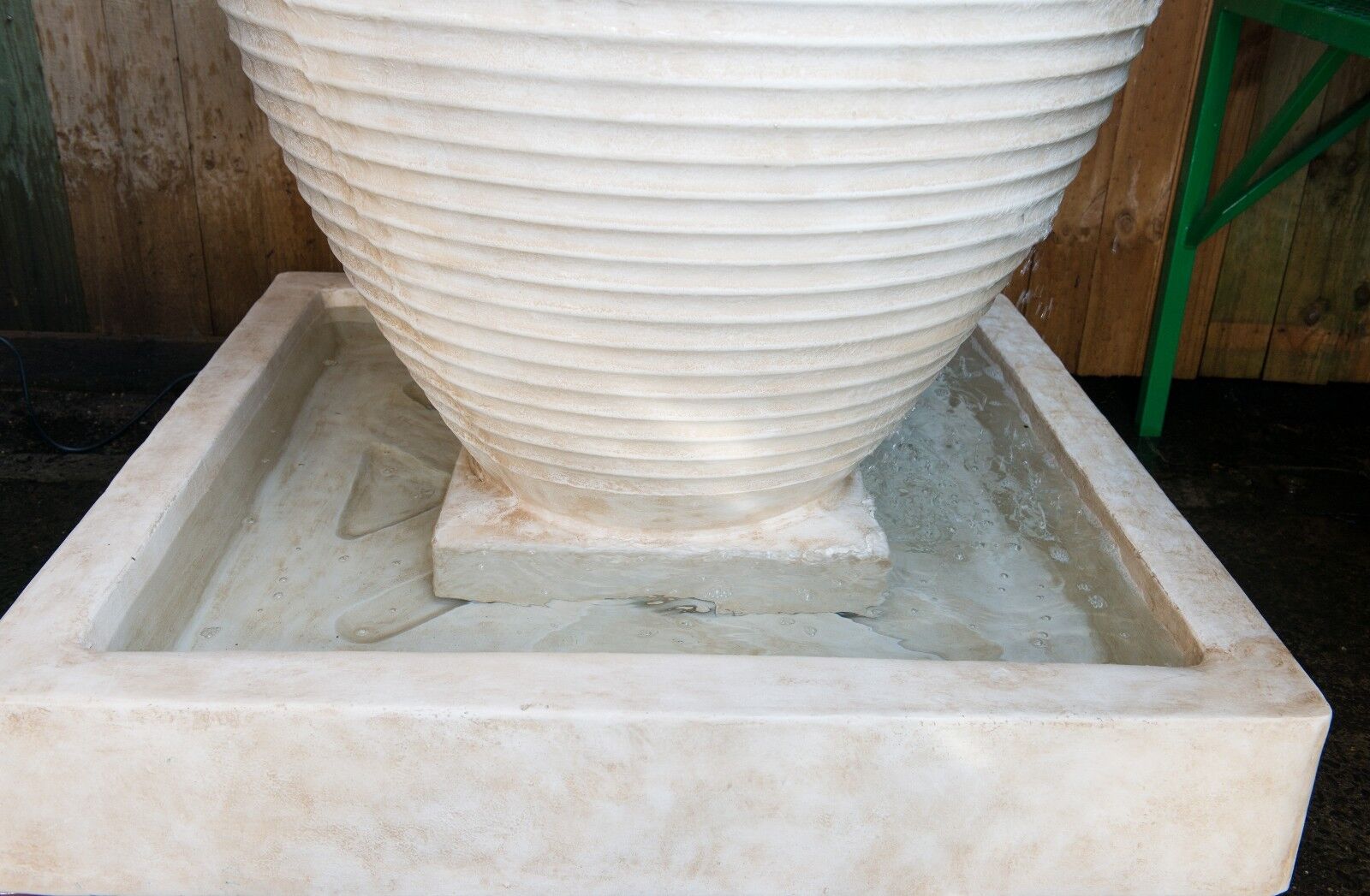
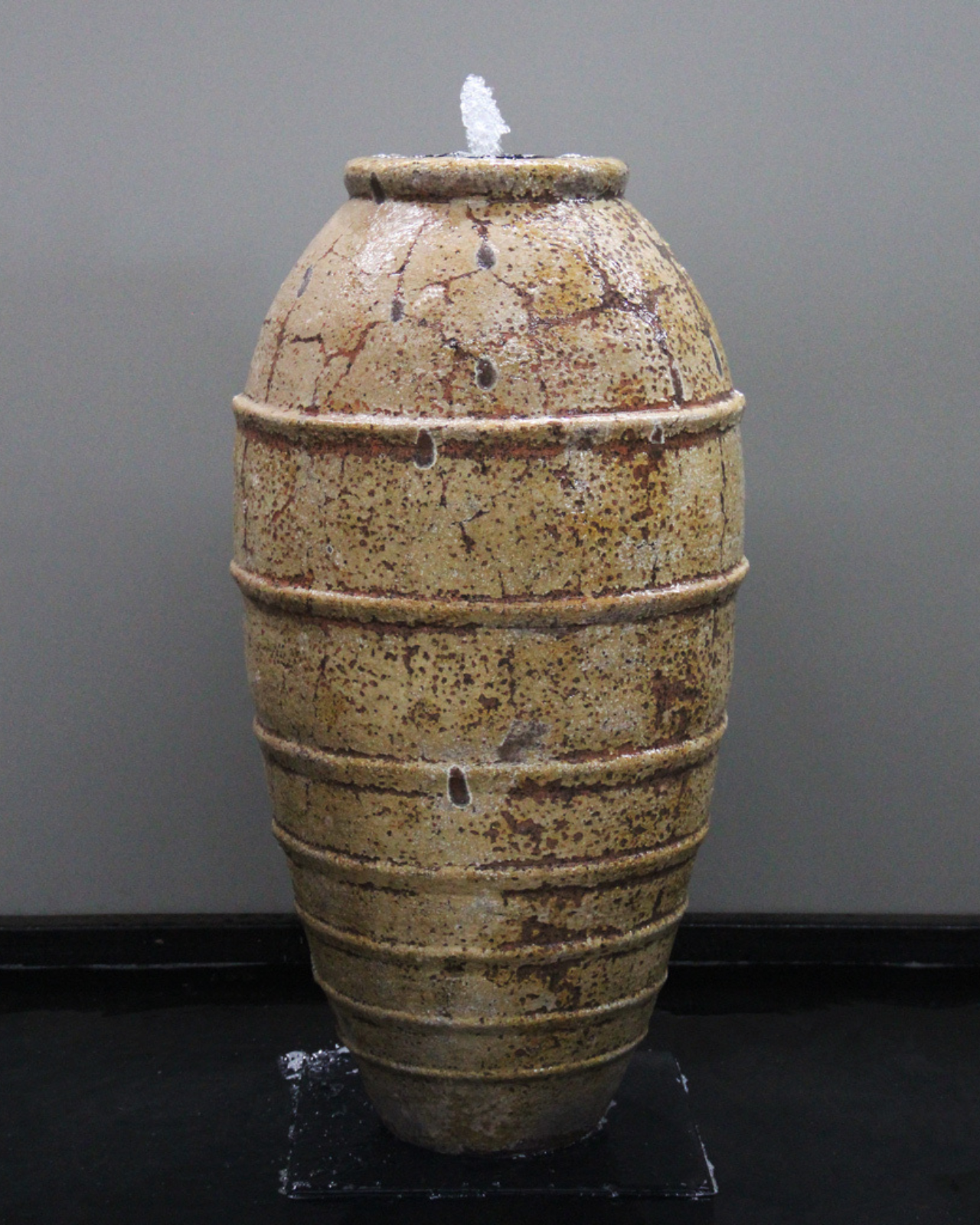

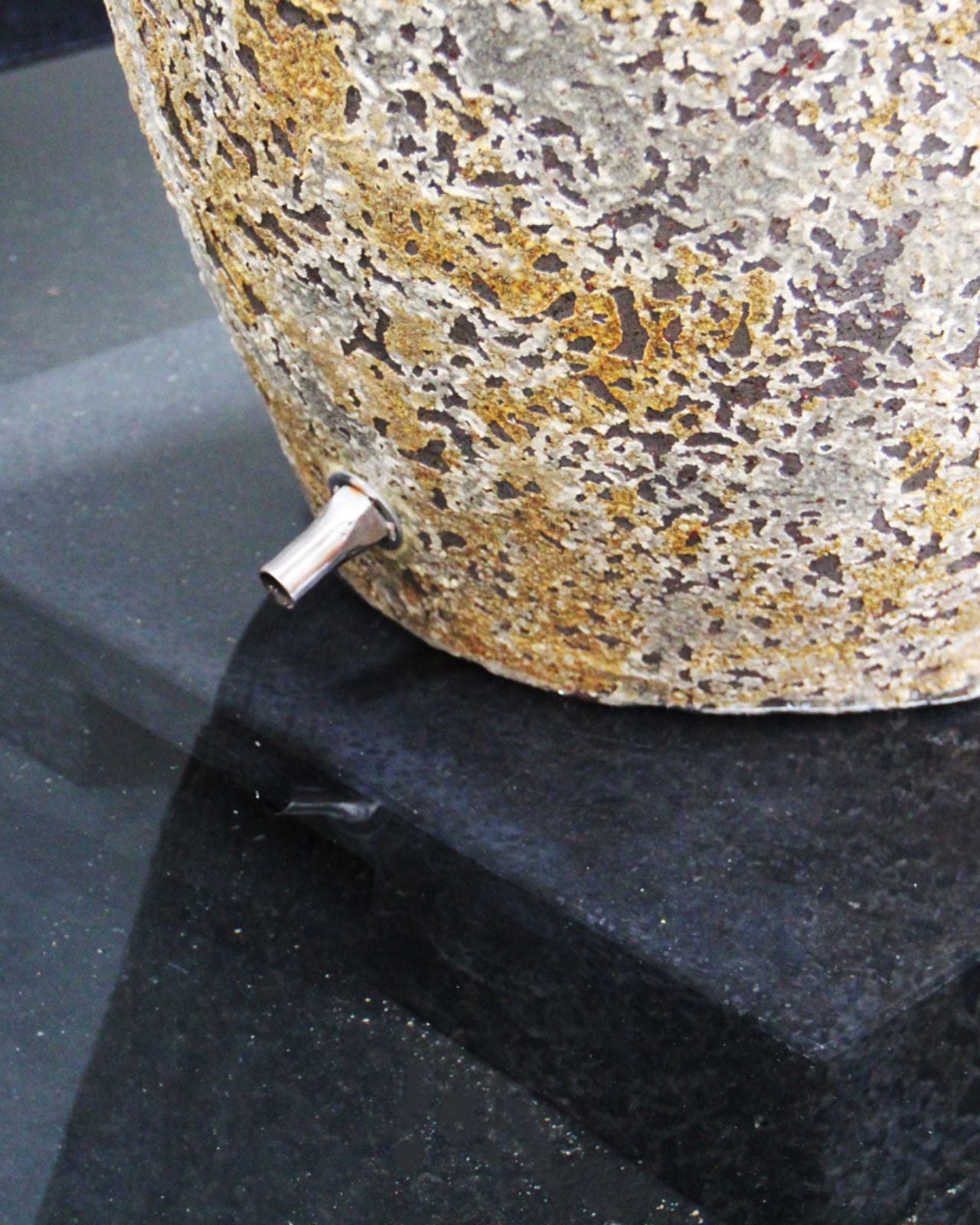
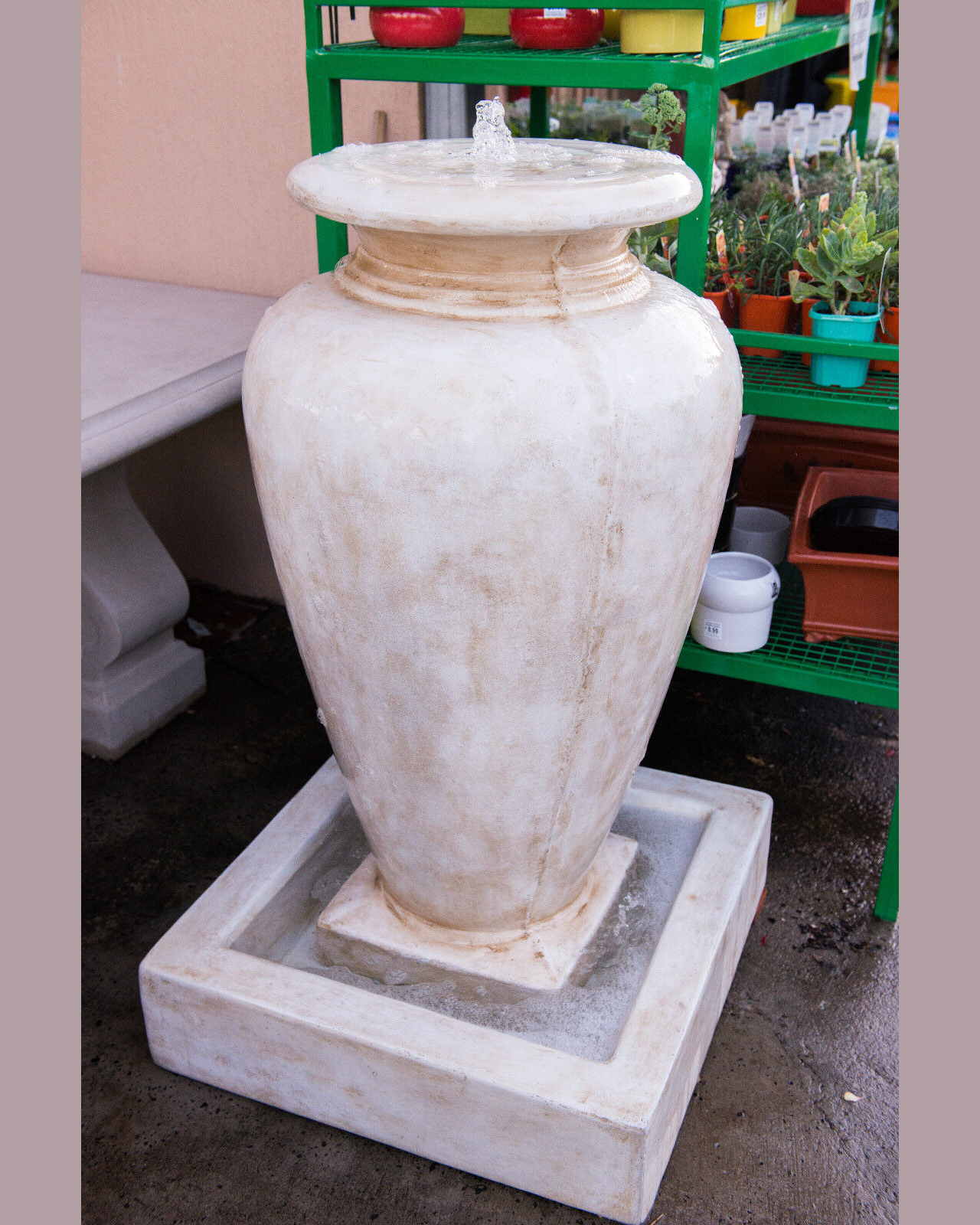

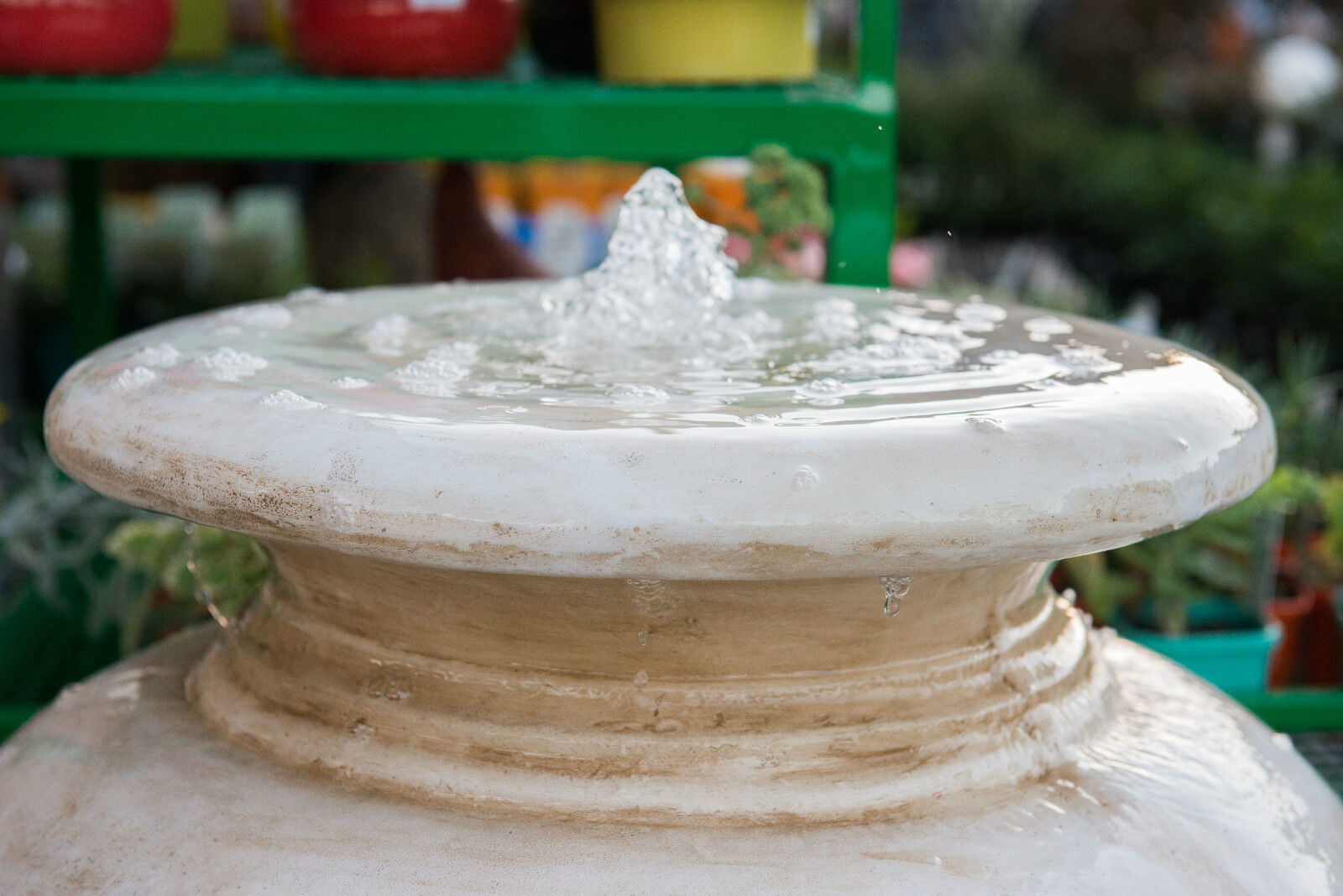
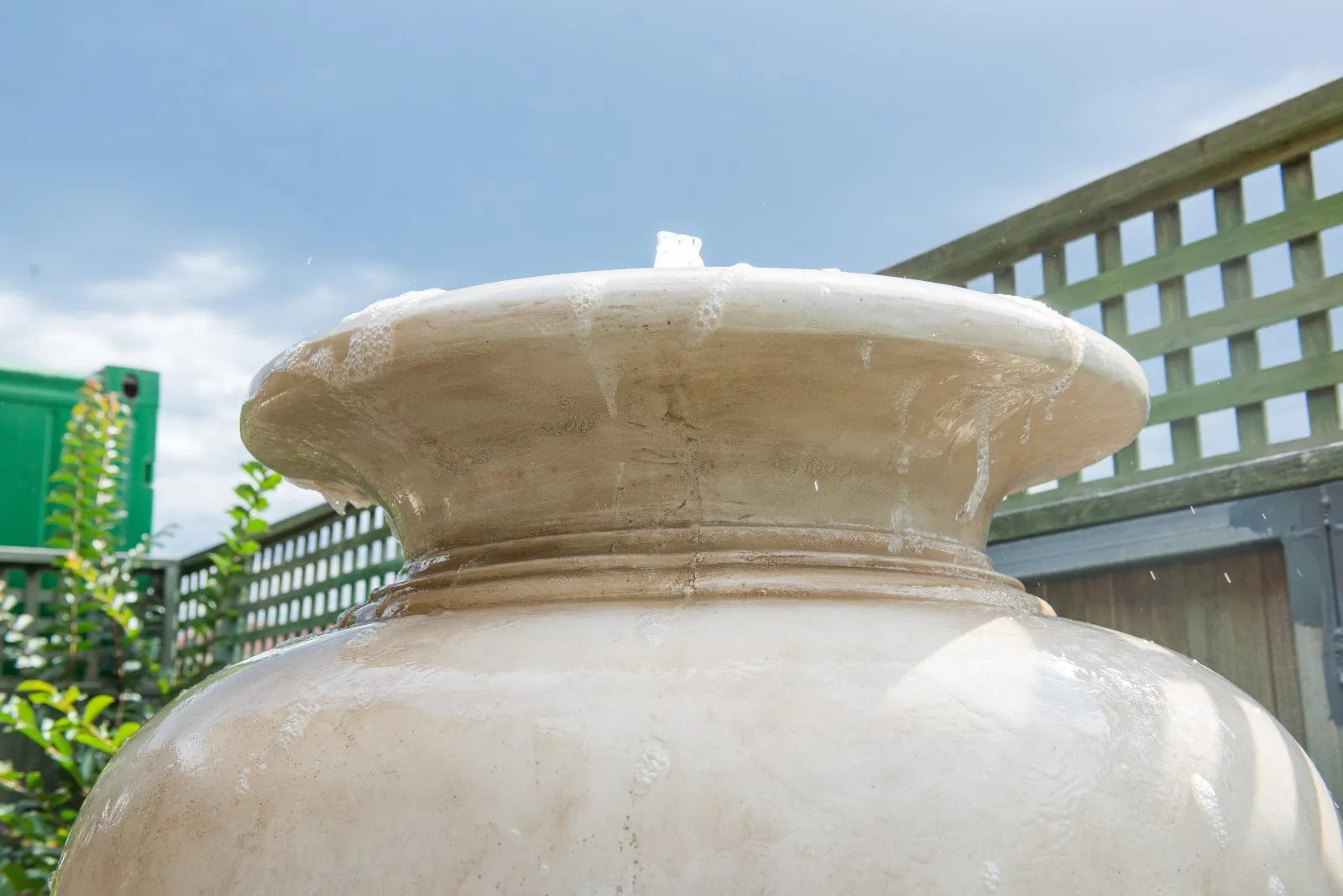
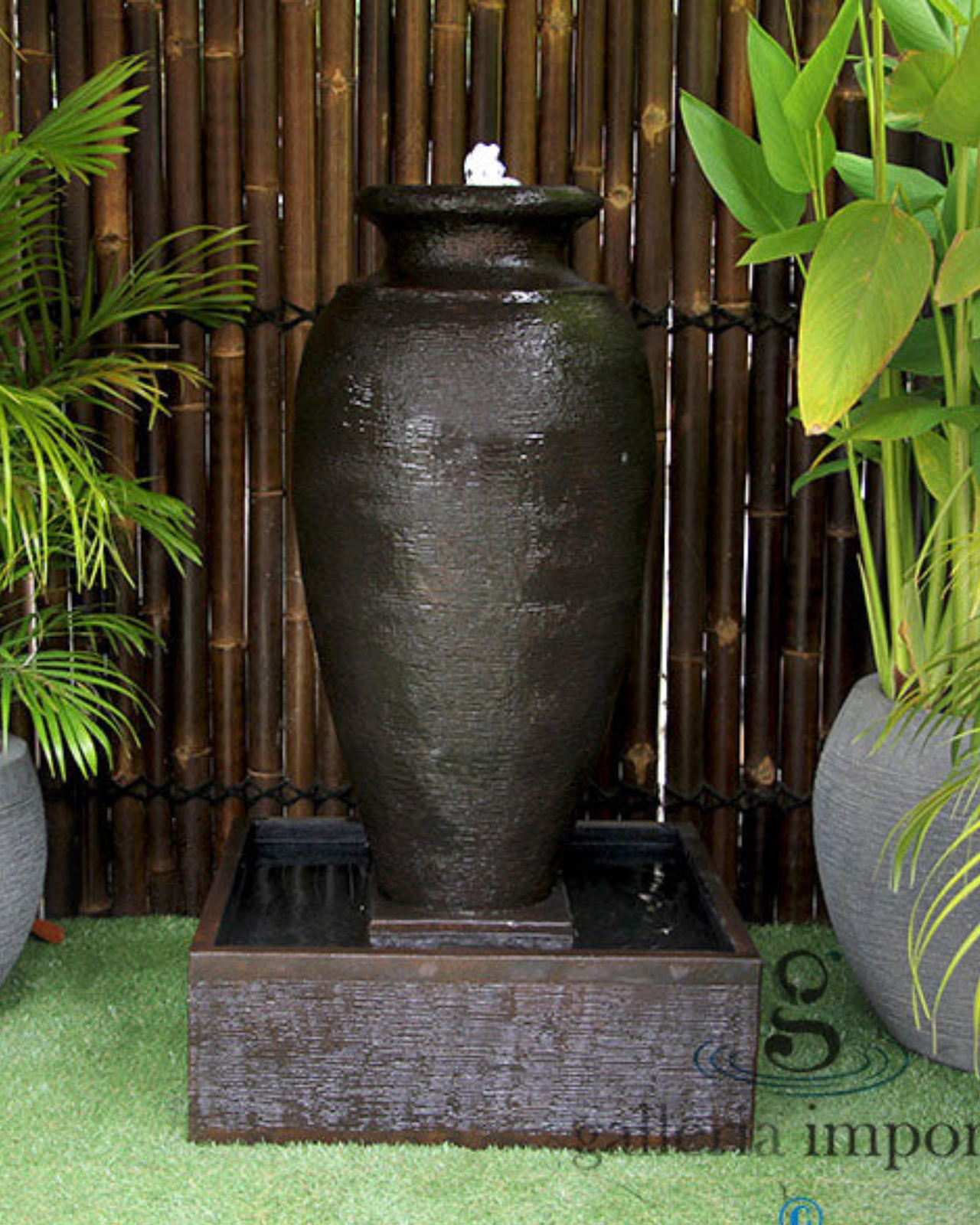

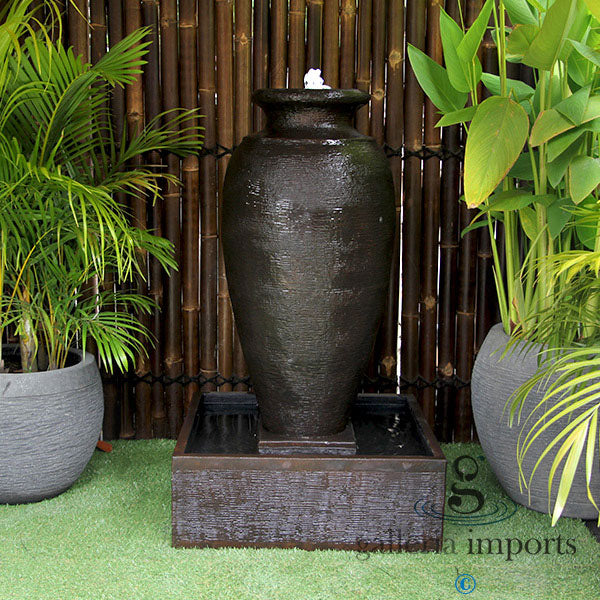
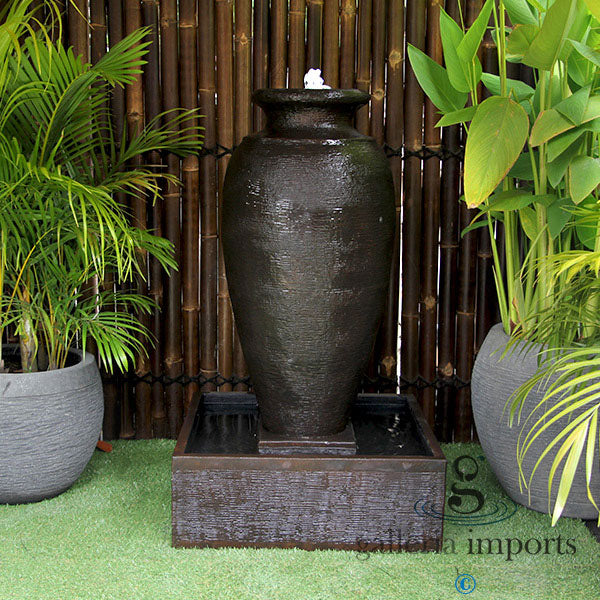
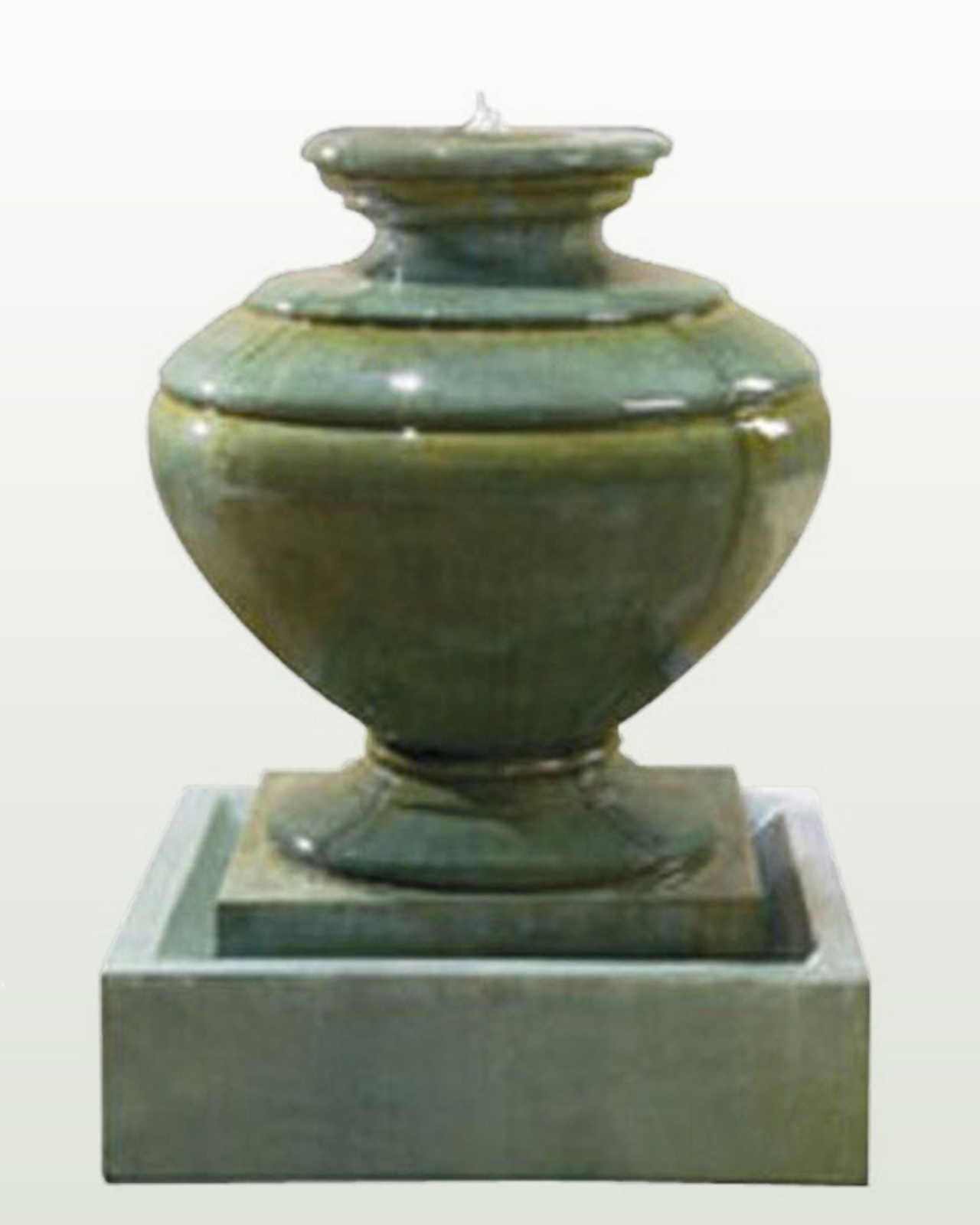
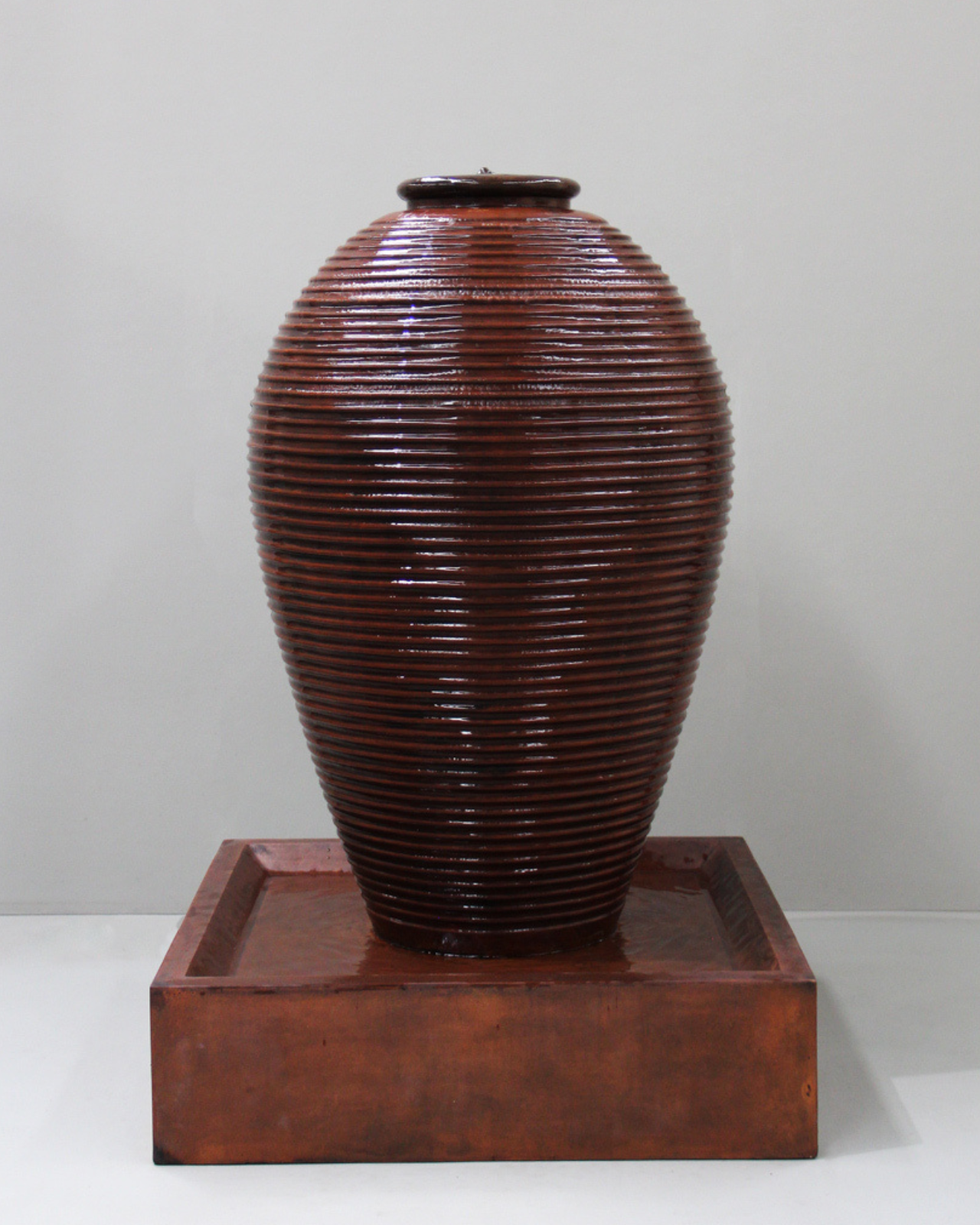
Share:
Garden Urns 101: Selecting, Installing, and Maintaining Your Perfect Piece
Why Limestone Makes for Perfect Water Features